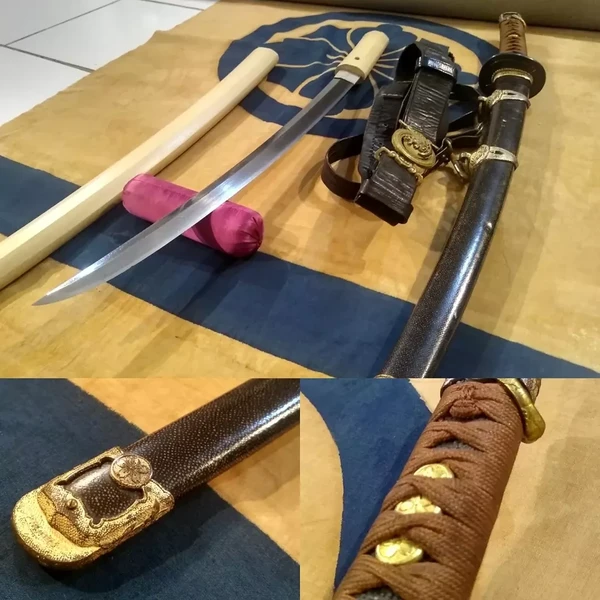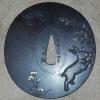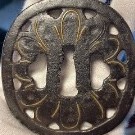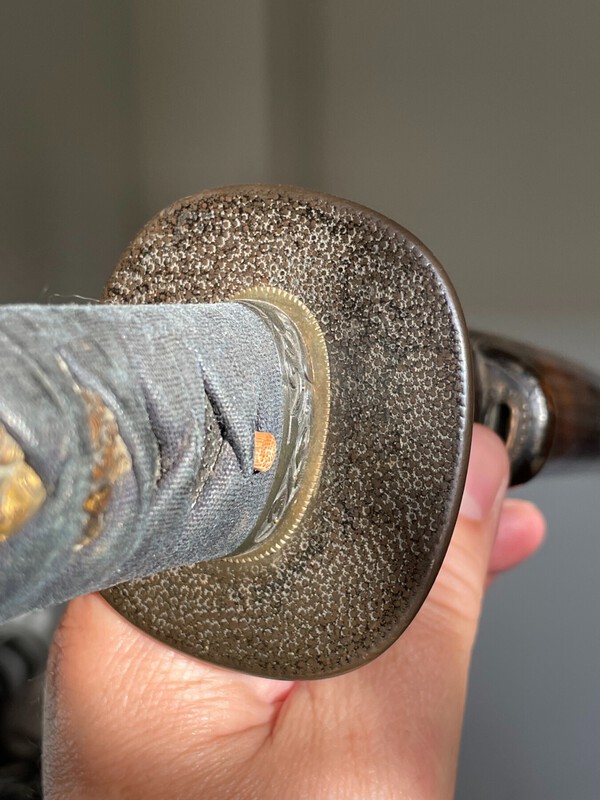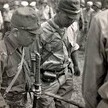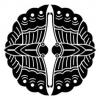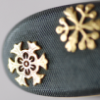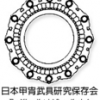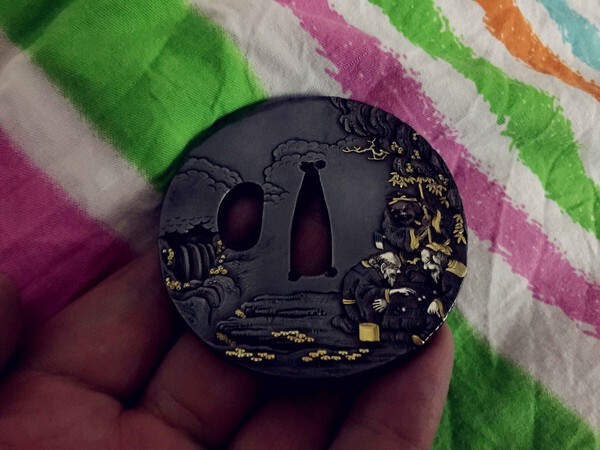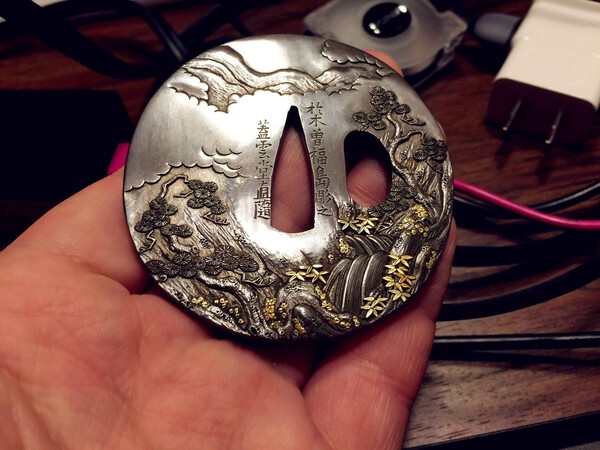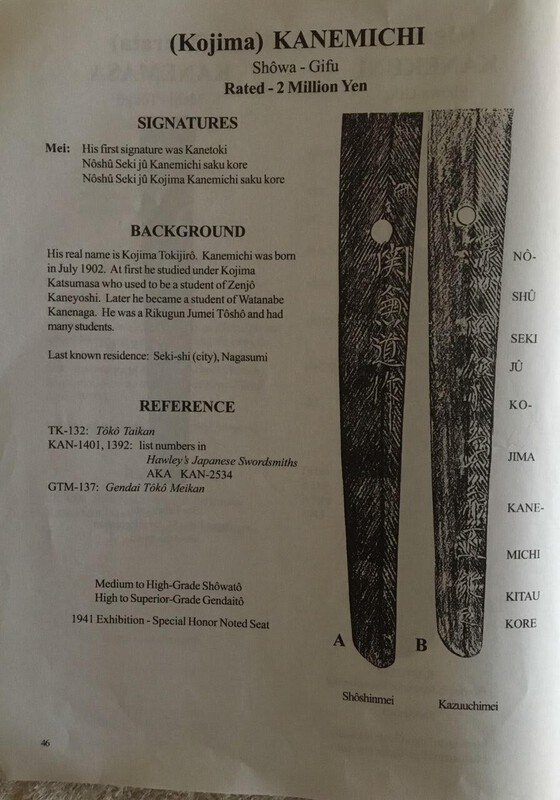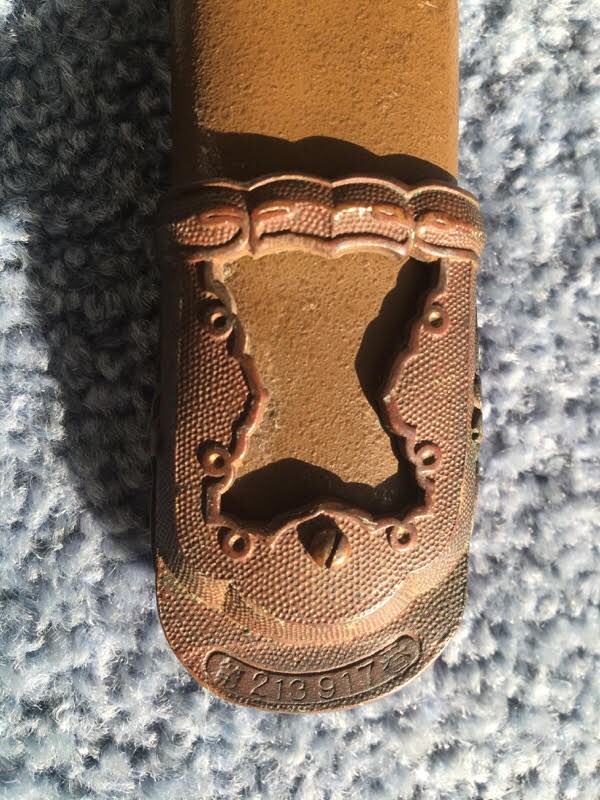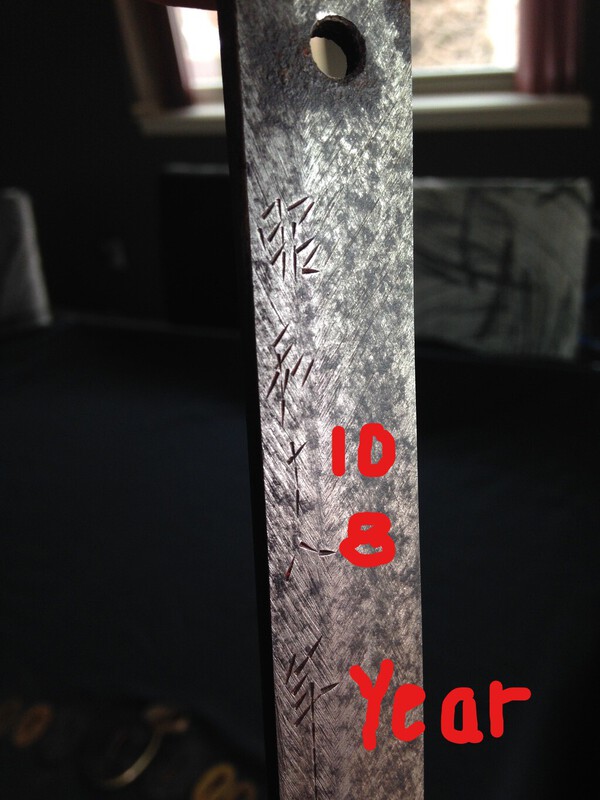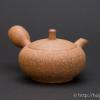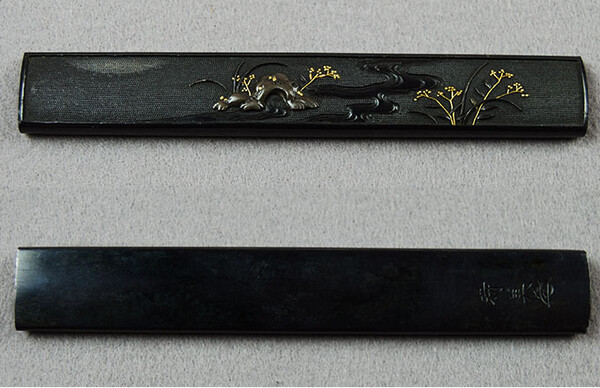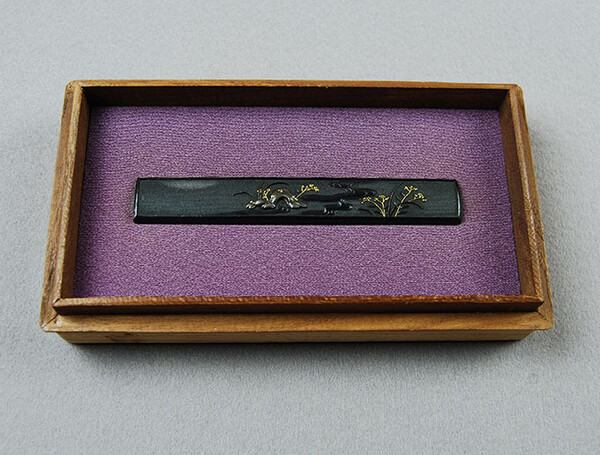Leaderboard
Popular Content
Showing content with the highest reputation on 09/06/2021 in all areas
-
5 points
-
I think most aspects have been already well covered but I'd like to add.. A properly carried out restoration generally wouldn't be an issue when it came to shinsa, especially if the repair is invisible, which in my view it ought to be. A shonky job will, of course, be a red flag and may result in the work being rejected though. Gold foil on iron is typically nunome-zogan and when lost or worn away its repair is complicated by the inevitable rust present and blending in with remaining gold foil when it comes to recutting the damaged area. It's possible but a very tricky job to do well. It is possible to effect a cosmetic touch up by means of electroplating but matching the gold colour is sometimes impossible. As has been already mentioned kin-keshi, or murcury amalgam / fire gilding was one traditional method on non-ferrous metals and alloys but quite a lot of gold foil on non-ferrous, especially larger areas of polished gold (like on kozuka backs for example) appear to be a form of fusion application. Damage to these grounds is often in the form of a tear or where a little dent has wrinkled an area of incomplete fusion. This technique is not like the modern Korean technique of Keum Boo nor does it appear to use any murcuric nitrate (sui-gin) as a flux but is more akin to direct fusion, with a rosin flux from what I've been able to deduce from texts and microscopic examination. This technique, hitherto not documented yet in evidence everywhere on tosugu, is certainly not practiced today. Repair to this sort of surface may be very tricky. On the odd occasion I've done it I actually matched the gold colour and then inlaid a patch to extend slightly beyond the damaged area and then carefully polished the slightly raised patch down until it melded with the original foil. It's a bit like eye surgery.5 points
-
4 points
-
4 points
-
To my eyes this tsuba would appear to be shakudo. Un-patinated shakudo is virtually identical to copper in colour. Shibuichi is, by comparison, a much paler pink colour before patination, but when the patina is worn off the bare metal tarnishes very rapidly to hid the fresh pale pink. Invariably what we see is a tone of grey, a more silvery patch sometimes (where the copper component of the patina has been lost leaving a silver rich film) or a dirty coppery/brass sort of tarnish. I'll try and put together a little chart of images to illustrate the different alloys, patinated and not, to help in future identifications. Copper alloys with less than around 10% silver patinate (in rokusho, the traditional method) to a deep chocolate colour, not grey or black.3 points
-
I've been in this forum for several years now and I have seen a lot of interesting and great Tosogu. However, I can't remember ever seen old Koshirae here. All of them were from the Edo period or later. For this reason I would like to show you a Uchigatana Koshirae from the Momoyama period. A koshirae for a single handed sword that would have been used by a warrior on horseback as an auxiliary weapon to a tachi. Examples of these are very rare and sought after. The tsuka has a very nice hourglass form and is rather thin with black lacquer same wrapped in asa cords. The matching fuchi kashira are in a light shakudo, possibly shibuichi which matches the material of the tsuba. The ko kinko shishi menuki show good form with good patina. The tsuba is punched with star designs on the surface which still retain quite a bit of black lacquer from the fighting days. The kurikata of the saya still has its Momoyama period fittings which are carved from one piece rather than being a central piece with seppa. This style is known on high quality pieces during the sengoku period. In all a very rare and high quality piece. There are some flea bites to the saya lacquer and there are some minor spots of old urushi repair that are not noticeable and actually add to the beauty of this very well matched and restrained samurai piece. Kindest regards2 points
-
2 points
-
Hi John , with all the forging flaws ( particularly those shown in the fourth and fifth photos ) you should give this a miss . It is no doubt old , maybe late Koto or shinto , but not collectable . Ian Brooks2 points
-
Hi Jake, Watch out for fake NCO's swords - they are the most faked of any type of Gunto. Most of the fakes seem to come from China. The first version Type 95 NCO swords are the most commonly faked (the ones with the brass tsuba). This sword appears legit to me. It's the 1st variation of the 2nd version Type 95 characterized by a plain iron tsuba and top-latch release mechanism (note: the 2nd variation, less common, of the 2nd version features a side-latch release mechanism). The 3rd version of the Type 95 is nicknamed the "Pineapple sword" due to it's having a wood tsuka with cross-hatch pattern cut into it, and there are even later variations of it featuring a different style of wood handle. Anyway, these Type 95 NCO swords are usually sold in the $800 - $1200.00 USD range. I have seen some sell for as high as $1600.00. And then there's the very rare copper-handled NCO swords - those sell for thousands of dollars. They were the very first of the Type 95's and less than 7,000 were produced, if I remember correctly. You can find decent Type 98's and Rinji Sieshiki's for around $900 - $1200.00 if made by a Seki smith or a low-ranked swordsmith. The Type 98's made by RJT smiths go for more, sometimes a lot more - often $2000 - $3000.00+. Then, there's the swords that come with ancestral (family) blades and they can be quite pricey, as well. Also, the Type 97 Kai Guntos (Navy swords) can be expensive, though you may still be able to acquire a sword with an arsenal blade (such as Toyokawa) for under $1200.00. I have only skimmed the surface here and I am giving estimates based on what I have seen and experienced with buying swords over this past year. I am new to the hobby, as well. I'll learned a lot about the hobby and about Gunto collecting since the start of the year. Good luck and happy collecting!2 points
-
Bob, when I opened the page I first looked at the image, saw the fish theme, and thought ‘Iwamoto work’. I had not heard of Asai before, and looked him up. It seems that Asai Ryōun was the early name of Iwamoto Konkan… With regards to the hakogaki, it should be read from left to right. So what you have would be read as ‘Asai Ryōun gyotaku meijin Ryōkan monjin Edo Yotsuya jū’ (浅井良云魚拓名人良寛門人江戸四谷住) In terms of translation, it should be interpreted as ‘Asai Ryōun (浅井良云), master of fish prints (魚拓名人), student of Ryōkan (良寛門人), resident of Yotsuya, Edo (江戸四谷住)’ .2 points
-
The first is signed ‘Senshū jū Minamoto Kunimitsu‘‘ (泉州住源国光) The second is Sukemitsu Nobumitsu (佐光信光), and the third is Nobumitsu (信光) - it’s highly like that the later two are gimei/ non-Japanese2 points
-
季✕ 秊〇 时 I'm never sure if he is deliberately using this kanji, or if he is using 時 in a highly calligraphic style - but he uses it all the time. I know he tends to reach for the obscure words/kanji when it suits him. Anyway, this is a highly specialized translation job: a mixture of kanbun, sword jargon, and weird kanji...and you absolutely nailed it. Very impressive.2 points
-
2 points
-
This is a set of fittings that I have owned for many years. The maker is Asai Yoshihiro, and one of the really interesting features is that the tsuba is made of soft metal on one side and iron on the other (shown is only the soft metal side). There is an inscription that looks like an appraisal underneath the set (see next page). I can make out most of it: Yoshihiro mon jin Edo yotsuya ju is the middle line and Asai Yoshihiro gyotaku mei jin nari is the right side. My understanding is that he lived in Yotsuya in the Edo period and was famous for making fish images. The left line appears to have the name of the appraiser, and I can't figure that one out (see next page).1 point
-
Dear All, The Japanese Armour Society is pleased to announce our next webinar presentation scheduled for Sunday, September 26, 2021 at 15H Paris Time. For this presentation, we have a special guest, Chris Glenn who will be presenting an overview of the Battle of Sekigahara, the largest and most important event in Japanese feudal history. This lecture will include specific examples of armour that was used at this great battle and there will be opportunity for Qs & As. Chris Glenn is a Nagoya based, Australian born radio DJ, TV presenter, speaker, narrator, MC, author and historian. Chris is also the Sekigahara Tourism Ambassador, the Nagoya Tourism and Cultural Exchange Ambassador, and the Omi Tourism Ambassador. And last but not least, Chris is a collector of samurai armour and weapons. Needless to say, this lecture is an event not to be missed! Please note that in an effort to publicize the initiatives of the Society, and to provide a sampling of our membership offerings to those outside of the Society who may be interested in our activities and are considering membership, we will be opening this webinar to the general public. However, please note the following requirements: In order to access the webinar, all attendees must have a Zoom account All attendees will be required to register with their real names and country of residence Once their registration has been approved, attendees will be given an access code to the webinar By registering for the webinar, all attendees agree to not make any recordings or screenshots of the presentations All content of the webinar remains the property of the Japanese Armor Society and/or copyright holders of the images contained within the presentations and cannot be reproduced without the expressed written consent of the JAS and/or the copyright holders Please note that the webinar is restricted to 100 persons only, and thus registration/participation will be allocated on a first-come, first-served basis, with JAS members having priority over non-members. When: Sep 26, 2021 03:00 PM Paris Topic: The Battle of Sekigahara Register in advance for this webinar: https://us02web.zoom.us/webinar/registe ... BBvQyd5OBw After registering, you will receive a confirmation email containing information about joining the webinar.1 point
-
1 point
-
1 point
-
Don't get me wrong......does this koshirae have got papers ? If , yes did the paper say it is a momoyama period pice ? If , not.......... What make you think that this is a orginal from the momoyama period and not a koshirae in the "style " of the momoyama period? It was not so rare that in Shinto and Shin-Shinto times "old-style" koshira were made.1 point
-
When I first read the question I also thought about this Tsuba in the seven samurai. I think Akira Kurosawa movies are good but not 100% sure about the historical provenance.1 point
-
There is such a thing, and if you have been discussed here on the forum. In the pictures it can be a little difficult to distinguish between the two. The zoheito tend to have a bit more curve in the blade and shorter nakago.1 point
-
Nick, What I see is a perfectly real old Mino blade with a dubious polish and relatively inexpensive but late mounts, but for the amount of money being asked I am sure you could do much better.1 point
-
John You and I both like them, but seems not too many people interested in those arsenal machine made Zohei-to.1 point
-
Yes, I think it is. The plots of the two have many similarities. So it is likely that Washington Irving was inspired by it. But in fact, there are more stories with similar plots in the East, such as another Chinese story "the governor of Nanke" or the Japanese legend "Urashima Tarō”。 Oh, by the way, don't forget Marvel's ancient legend "Captain America". Ha ha, just kidding!. But anyway, it seems that Ranka's plot is the closest to the novel. By the way, my tsuba seems to be the only thing that uses this theme. I didn't see the second tosogu carved with this theme, including those in the market and in the museum. I haven't even seen any works on this subject in any book, which is very interesting. If you are interested, you can study it in depth in the future.1 point
-
Hi Jeremiah, yes, shibuichi is the least poetic of the alloy's names, and actually inaccurate in most cases to boot. 朧 銀 can be read as either Oboro-gin or Rō-gin , hazy or misty silver.1 point
-
don't forget that the Meiko zukan was written around 1730, Matsumya Kazan must have known the schools and their work. The Oie-bo is a evoluted remant of the early hoate. And if the Tokugawa shogunal family wanted to distinguish themselves, the oie-bo was a perfect way to express their undisputable status.1 point
-
Lately I have seen a few of those priced very high, as much as I like them I don't think they are worth over 2000usd unless in perfect condition with original tassel.1 point
-
1 point
-
Item no. 109 - Iron Tsuba 6.96 cm x 6.64 cm x 0.58 cm Subject of single dragon rising through water and clouds with Udenuki-ana. Remains of a signature - age and school unknown. Acquired as part of a collection Item No. 110 - Iron Tsuba 8.49 cm x 8.29 cm x 0.48 cm on plain , 0.83 cm over pattern Subject of a pair ( male & female ) dragons by Masatsune? Bushu Ito school , late 18th cent. Large tsuba that appears to have been carved from a single piece of iron . Great patina and general condition.1 point
-
I recently consigned a sword with Ray and it was a very easy, pleasant transaction. Ray communicated everything, and set the price commensurate to the sword, condition, etc. with the intent of selling it for market. I highly recommend Ray for any swords you may want to sell or buy. Everything was honest and straight forward, no surprises. Thanks Ray!1 point
-
I'm glad the atmosphere here is active again. To celebrate. Continue to share my collection with you. Ranka (legend) One plot element of the legend features two immortals playing a board game, interpreted in later times as Go, so that Lanke (or Ranka in Japanese) has become a literary name for Go. The legend is recorded in Ren Fang [zh]'s Shuyiji [zh; ja] or Tales of the Strange, and features a woodcutter, Wang Zhi or Wang Chih (王質, Wáng Zhì), and his encounter with the two immortals in the mountains. The story runs as follows: Wang Zhi was a hardy young fellow who used to venture deep into the mountains to find suitable wood for his axe. One day he went farther than usual and became lost. He wandered about for a while and eventually came upon two strange old men who were playing Go, their board resting on a rock between them. Wang Zhi was fascinated. He put down his axe and began to watch. One of the players gave him something like a date to chew on, so that he felt neither hunger nor thirst. As he continued to watch he fell into a trance for what seemed like an hour or two. When he awoke, however, the two old men were no longer there. He found that his axe handle had rotted to dust and he had grown a long beard. When he returned to his native village he discovered that his family had disappeared and that no one even remembered his name.1 point
-
Are Shibayama truly tsuba? I love the workmanship but are they truly tsuba or just tourist ware? They could never serve the function they are imitating - so are they outside the realm of tosogu and more in the way of 'decorative foreign exchange'? https://www.jauce.com/auction/q1002008505 [There have been some problems lately with links to Jauce. - I am uncertain why.]1 point
-
Matthew, So cool to meet the real owner! I'm with John. I think you've got a legit WWII gunto. And in a collector's perspective, more valuable BECAUSE of the uniqueness of the date. In the coin collecting world, a double-struck coin is more valuable because it is so rare. The image of Japanese precision in their craft can create this false aura that they were flawless. I like to see things like this because it brings the humanity back into focus.1 point
-
Hi Matt, welcome to the forum. Looking back on the pictures the sword looks fine, good mounts, blade is in good condition. You probably overpaid by a few hundred dollars, no big deal if you enjoy it.1 point
-
As always I appreciate the replies. This forum is an invaluable resource and I will be making a donation nation today or tomorrow. Too much money to show at something with mixed opinions and agreed that the koshirae is unfortunate1 point
-
For those sending expensive items please consider using the apple airtag for your own proof of tracking.1 point
-
I agree with Stephen; for things of value within the US it has to be registered mail from the post office. Beyond what Stephen said, if the package spends a night in a post office it has to be in a safe. And it isn't expensive. I'm about to ship a large tube with 5 swords and some boxed fittings to the east coast. 10 pounds and $20,000 on value will be about $108 with full insurance. Registered can't get lost; as my guy at the PO says, "If you lose registered you lose your job." Grey1 point
-
Not to get in the way of Peter's ambitions regarding the red list. And agreeing with all that has been said about the For Sale section, especially Stephen's sword. This is a perfectly legitimate Japanese sword with a late but authentic koshirae. All the best.1 point
-
For what it's worth...and just my .02 worth. I have recently started using DHL for ALL my shipping of important items. I started using them just about 2 years ago. Below is the breakdown of my experience with DHL, 1.) They are expensive (worth every penny). 2.) They are shockingly efficient. 3.) They up date you with absolutely every move the package takes (damn near hour by hour). 4.) They deliver so fast it makes your head spin. I have used them to ship from Japan to the USA, 2 times. Each time less than 48 hour total time frame. I have used them to ship from east coast USA to west coast USA 1 time, slightly less than 24 hour total time frame. I have used them 1 time from England to USA, less than 48 hour total time frame. I personally will no longer use any other mailing/shipping service if given the choice. Mark1 point
-
Please consider registered mail. https://www.stamps.com/usps/registered-mail/ It has its own room, when you drop off at PO, each time it's handled it has to be signed for and noted who did it. UPS store is a racket, they rip you off in price. One of the few things I've lost was via UPS store.1 point
-
Truly painful to hear. I hope they recover it... To me High volume companies are usually full of disappointments (UPS and USPS). I pay extra for fedex and I follow strictly all policies so I don't end up in a predicament as yours. Not that it can't happen But I know their business inside out so I sleep well at night Cheers J.1 point
-
1 point
-
Have I posted this one before? No idea, but with Australia's lockdown laws, I am looking for something to do. I picked this up ages ago from a collector that didn't like the polish, his loss is my gain I guess, I LOVE it! A Hokke Saburo NOBUFUSA, no date, in my view a very good smith. It also helps being in mint mounts as well. I acknowledge the page from Slough's wonderful book.1 point
-
Just received a tsuba from Japan yesterday via EMS. 3 days, no problems.1 point
-
Watched Ken Kata’s linked video for 30 minutes all in Japanese but could not see anything directly related. Was this the wrong video, perhaps? Anyway someone told me that there should be light, a hole at the foldover as if you could insert a pin or a toothpick right through it.1 point
-
1 point
-
According to me you have three guys who "worked" on that blade. First the swordsmith. Second a non Japanese wise ass put a sloppy showa, then a third rocket scientist who was non Japanese also and obviously not far from the second ladd added the figure one and three and stopped short not convinced himself of his dexterity. I will add that even the swordsmith kanjis are somewhat suspicious because they are carved quite deep which is not common. You will have to compare with other swords made by the same smith.1 point
-
In addition to being wrong, the way the year is cut is also horrible - as in unskilled, amateurish, clumsy. Meanwhile, the actual mei, Kanekuni, is skillfully done. The two sides are done by different hands. Note, the kanji character 一 (one) can easily be made into a 十 (ten) with the addition of a vertical stroke, so even if the person who wrote the year mistakenly wrote 一三 instead of 十三, the mistake could have easily been fixed. But on this sword the mistake is just left there, unfinished. It makes me think someone, maybe non-Japanese, was using this sword to practice carving in steel. The single stroke after the 一三 isn't placed in the right spot or the right angle for 年, so that mark also makes me question who was holding the engraving tools and what their intention was. Plus, I think the language used to describe the sword is intended to deceive, and is in its own way, horrible. The dealer is playing a shell game with words; is it a samurai sword? a katana? a gendaito? He is adamant that it isn't a showato. Already the newbie is being bamboozled by buzzwords. Was it picked up off the battlefield, or was it assembled afterwards from various parts? It has an arsenal stamp, but it is "clearly, and without question" a handmade blade? The stamp alone causes us to question it. The funky 一三 for the date causes us to question it. It seems to be a frankensword that the dealer is trying to sell as something more than what it actually is, and I guess he was successful. I also have several complaints about syntax and grammar used in the description. And my pet peeve is using the word "samurai" to describe swords of the 20th century, but these are petty compared to the other complaints.1 point
-
Yes, but that's not how they wrote thirteen. It should be "showa 10 3 Year" I've attached comparisons. Also, there seems to be a single stroke, where the kanji for "year" should have been started. Honestly, I think the (what's the word for guys that did mei for the smiths?) got to the word "year" when he realized he messed the whole thing up and simply stopped!! I've made posters for my daughters school projects, and realized halfway through, that I had spelled something wrong. I think this is what happened here! The mei is so sloppy, I think we're seeing the work of a rookie mei cutter!1 point
-
Hi ken have you tried contacting the Irish Token sword Society , you maybe able to get some good advice or help close to you !1 point
-
1 point

















